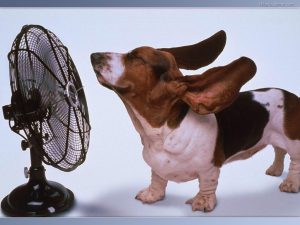
Obviously, the best way to keep your home cool during the summer is to use an air conditioner to keep the temperature down, but there are other options that don’t raise your energy bill quite significantly.
Fans and Ceiling Fans
If you’re looking for ways to beat the heat, a ceiling fan can be a great investment for your home. Good fans make it possible for you to raise your thermostat setting and save on air-conditioning costs. Fans don’t use much energy, but when air is circulating, it feels much cooler. Ceiling fans are best, but a good portable fan can be very effective as well.
Shades, drapes, or blinds
Install white window shades, drapes, or blinds to reflect heat away from the house. Close blinds, shades and draperies facing the sun (east-facing windows in the morning and west-facing windows in the afternoon) to keep the sun’s heat out and help fans or air conditioners cool more efficiently.
Internal Heat
The most common sources of internal heat gain are; appliances, electronic devices, and lighting. Be aware from where the heat is coming. Now if you have air conditioning, use it wisely. Unless you absolutely need them, turn off incandescent lights and heat-generating appliances. Replace incandescent bulbs with compact fluorescents; they produce the same light but use a fifth the energy and heat.
Plants
Plant trees or shrubs to shade air conditioning units, but not block the airflow. A unit operating in the shade uses less electricity. Deciduous trees planted on the south and west sides will keep your house cool in the summer and allow the sunlight to warm the house during the winter.
Roof and Walls
Paint your roof white – If you’ve got a flat roof, paint it with a specially formulated reflective paint or just paint it white. The reflective effect will help to keep the rooms under the flat roof much cooler.
Other things to remember
Humidity makes room air feel warmer, so reduce indoor humidity. Minimize mid-day washing and drying clothes, showering, and cooking. And when you must do these things, turn on ventilating fans to help extract warm, moist air.
Avoid landscaping with lots of unshaded rock, cement, or asphalt on the south or west sides because it increases the temperature around the house and radiates heat to the house after the sun has set.
If the attic isn’t already insulated or is under-insulated, insulate it NOW. Upgrading from 3 inches to 12 inches can cut cooling costs by 10 percent.
